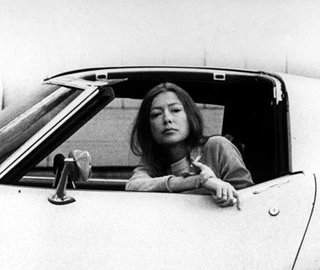After Condé Nast: One Editor’s Goodbye to All That

Dominique Browning’s book, excerpted in Sunday’s New York Times Magazine, will tell her story. Her story is more than just this, but it begins with this: she was the extremely successful Editor of a much-loved magazine at a time when the magazine medium meant something different than what it means now. It is too soon to tell what it means now, exactly, despite the rush to elegize, but Browning’s bravery was less about which skills it took to live within the walls of 4 Times Square and more about what it took to live beyond them. This is her Goodbye to All That.
Goodbye to All That was published as part of a collection of Joan Didion’s essays, Slouching Towards Bethlehem, in 1968. It is the sine qua non of Exit Literature, and specifically, the Literature of Exiting Manhattan. Didion captured what’s seductive in the city, that thing that leaves even those of us who’d “only planned to stay awhile” waking up there after fifteen, or twenty, years. It is what makes September in the city feel uniquely new every year, as if we were all matriculating at some sophisticated Swiss boarding school, yet to enter the philosophical Ivy League, that place of peace to which we’d been granted passports for all our sweat and tears in town.
Browning left Condé Nast only to realize the extent to which work had been her anchor and her clock; work was New York, in a way, so how could one live without it? In the excerpt she sleeps late, stares at eggs, and eventually arrives at Ovid (more on Gawker here; and the Observer here). We will read the book.
It is worth revisiting the Didion:
How many miles to Babylon?
Three score miles and and ten—
Can I get there by candlelight?
Yes, and back again—
If your feet are nimble and light
You can get there by candlelight.
It is easy to see the beginnings of things, and harder to see the ends. I can remember now, with a clarity that makes the nerves in the back of my neck constrict, when New York began for me, but I cannot lay my finger upon the moment it ended, can never cut through the ambiguities and second starts and broken resolves to the exact place on the page where the heroine is no longer as optimistic as she once was. When I first saw New York I was twenty, and it was summertime, and I got off a DC-7 at the old Idlewild temporary terminal in a new dress which had seemed very smart in Sacramento but seemed less smart already, even in the old Idlewild temporary terminal, and the warm air smelled of mildew and some instinct, programmed by all the movies I had ever seen and all the songs I had ever read about New York, informed me that it would never be quite the same again. In fact it never was. Some time later there was a song in the jukeboxes on the Upper East Side that went “but where is the schoolgirl who used to be me,” and if it was late enough at night I used to wonder that. I know now that almost everyone wonders something like that, sooner or later and no matter what he or she is doing, but one of the mixed blessings of being twenty and twenty-one and even twenty-three is the conviction that nothing like this, all evidence to the contrary notwithstanding, has ever happened to anyone before.
Didion stayed out West. (She once worked at Conde Nast, too.) Every generation needs a Goodbye to All That—which is not to say, a book on happiness. Didion’s work is not about learning to feel good; it’s about reconsidering a choice we once thought was the only one.




